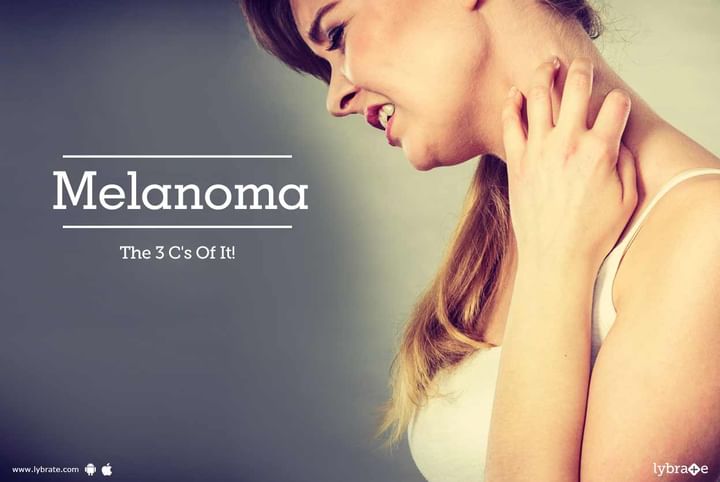Melanoma - The 3 C's Of It!
The skin has the largest surface area and is most exposed to the external environment. This exposure causes a lot of wear and tear, and one of the worse complications including melanoma, which is a form of skin cancer. Read on to know about its causes, caution signs to stay alerted and how to take care of the skin.
Causes
The skin has cells known as melanocytes which give it the color. Generally, the more the number of melanocytes, the darker is the person’s complexion. This pigment is also present in skin, hair, nails, and eyes. The moles are skins are areas of higher concentration of these cells. Africans moles can be a precursor to melanoma, but not all moles turn to melanoma.
- Exposure to ultraviolet rays from the sun. Fair-skinned people are at greater risk than darker complexioned people. A single sunburn experience can also increase the risk of developing melanoma
- Use of tanning beds, especially in people below 30, ups the risk of melanoma. Indoor tanning beds is classified as having the highest record by WHO
- Family history
- Ethnicity, with Hispanics at the greatest risk and African-Americans at the least risk
Caution
- For those who have risk factors for developing melanoma, a monthly self-exam is advisable. A formal annual exam with a dermatologist is also advised. This will help in early identification of the condition and lead to early treatment and containment.
- Melanoma is not restricted to the skin, can also occur in feet, eyes, and scalp
- Use a mirror to check all over the body
- If you have moles, watch for change in their size, shape, and regularity. Any change should be immediately checked for.
- If you see any new irregularities on the skin anywhere, get medical attention.
- Any sore that has not healed
- Any swelling that is near the mole or has not regressed
- Change in sensation including itching or pain
- A quick way to remember is to check for ABCDE: Asymmetry of the lesion, irregularity of the borders, change in color, diameter greater than six mm, and speed of evolution. Watching for these can help in early diagnosis.
Care
Melanoma is directly linked to sun exposure, and so reducing sun exposure and taking adequate precautions can help in prevention.
- Avoid or reduce exposure to sun
- Use sunscreen religiously. The SPF should be at least 30 and should be reapplied every two hours
- Use a hat or cap, sunglasses, and cover up when out in the sun
- Be extra careful when out on the beach or in the mountains
- Avoid sun if possible between 10AM to 4PM
- Use tan removal agents after a sun exposure
If you wish to discuss about any specific problem, you can consult an Oncologist.



+1.svg)
